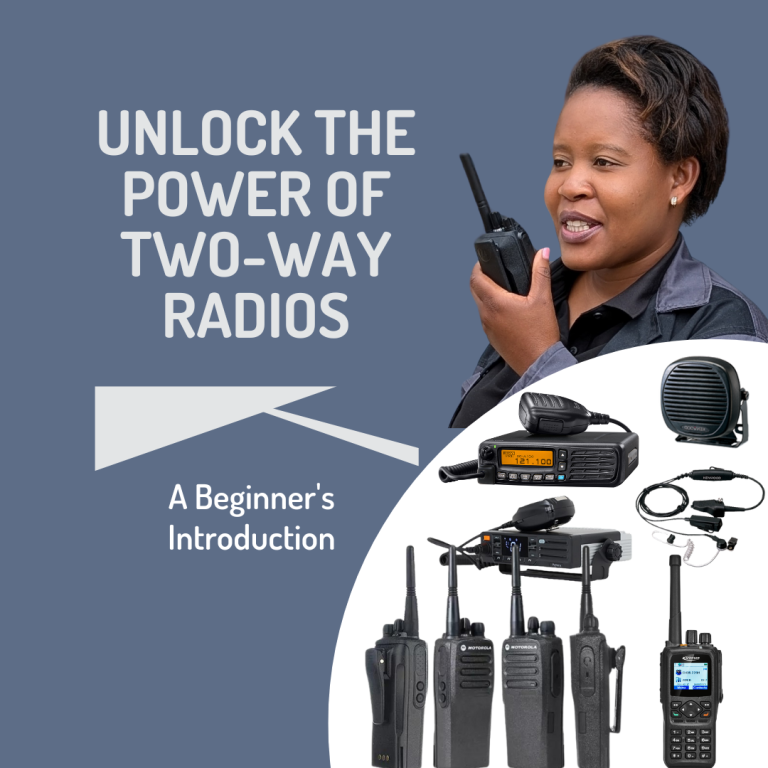
If you’re unfamiliar with two-way radios, you’re in good company. Often known as “walkie-talkies,” two-way radios are simple, powerful tools that allow people to stay connected without cellular coverage or internet access.
At Linktech Radio, we’re here to introduce you to the benefits and possibilities of two-way radios and explain why they’re a smart choice for various communication needs.
Introduction To Two-Way Radios
What Are Two-Way Radios?
The term two-way radio is a technology that allows individuals to keep in contact with each other using radio waves. Each user is given a radio unit which sends and receives audio and data sent over the radio waves. A two-way radio system can be as simple as two radios connecting directly to each other, or as complex as an encrypted network that covers an entire country.
You might know two-way radio by the name “walkie talkie”, which is the term used for unlicensed radio devices. The term two-way radio covers the unlicensed equipment and the licensed equipment- Wa-
How Do Two-Way Radios Work?
Two-way radio works by converting audio to radio waves that are then transmitted through the air. These radio waves are received by other radios which convert the radio waves back to audio.
The conversion to radio waves can be sent as an analogue signal or a digital signal, with digital transmission being the more modern technology. With digital radio, it is possible to send other types of data over the radio waves such as text messages and status updates. It is even possible to encrypt data when using digital radio to stop people using your network without your permission.
What Frequencies Do Two-Way Radios Use?
Two-way radio works between the frequencies of 30 MHz (Megahertz) and 1000 MHz, also known as 1 GHz (Gigahertz). This range of two-way frequencies is divided into two categories:
- Very High Frequency (VHF) - Range between 30 MHz and 300 MHz
- Ultra-High Frequency (UHF) - Range between 300 MHz and 1 GHz.
From these ranges, most two-way radio equipment falls into the 136 – 174 MHz and 403 – 527 MHz parts of the spectrum and must be licensed. Each country has its organization tasked with allocating licenses, but some two-way radio frequencies are allocated as license-free (for instance, PMR446 at 446MHz).
Why Choose Two-Way Radios?
You might wonder why someone would choose a two-way radio over a cell phone. Here are a few key reasons:
- Always Reliable: Even in areas without cellular service, two-way radios provide dependable communication.
- Instant Connection: Just press a button and talk—no dialing or waiting for calls to connect.
- Built for Tough Conditions: Many two-way radios are rugged, able to withstand demanding environments.
- Cost-Effective: Say goodbye to monthly service fees; with a one-time purchase, your team is set.
Where Can Two-Way Radios Be Useful?
Two-way radios are incredibly versatile, offering a range of applications that might surprise you:
- Outdoor Adventures: When hiking, camping, or exploring remote areas, two-way radios let you stay connected, even when there’s no cell service.
- Work Sites: From construction and security to event management, two-way radios enable teams to communicate quickly and efficiently on-site.
- Emergencies: In emergencies where other communication systems might fail, two-way radios can be lifesaving, providing a way to stay in touch.
Two-Way Radios: Quality You Can Count On
At Linktech Radio, we’re dedicated to providing reliable, high-quality two-way radios that make communication easier and more accessible. Two – Way Radios feature excellent sound quality, long battery life, and multiple channels, all designed to ensure you stay connected when it matters most.
If you’re ready to discover the benefits of two-way radios, we invite you to explore our selection. Visit Linktech to learn more about Two – Way Radios and find the perfect solution for your communication needs.

